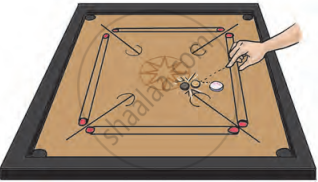Topics
Natural Resources – Air, Water and Land
- Natural Resources
- Atmosphere and Its Layers
- Air Around Us
- Composition and Components of Air
- Importance of Air
- Air Pollution and Its Causes
- Water: Our Lifeline
- Availability of Water
- Composition of Water
- Importance of Water
- Scarcity of Water
- Land
- Soil Formation
- The Importance of Conserving Earth’s Natural Resources
The Living World
Diversity in Living Things and Their Classification
Disaster Management
Substances in the Surroundings –Their States and Properties
Substances in Daily Use
Nutrition and Diet
- Nutrients and Nutrition
- Component of Food
- Carbohydrates
- Diseases Due to Deficiency of Carbohydrates
- Fats (Lipids)
- Diseases Due to Deficiency of Fats
- Proteins
- Diseases Due to Deficiency of Proteins
- Vitamin and Minerals
- Diseases Due to Deficiency of Vitamin
- Diseases Due to Deficiency of Minerals
- Fibre
- Diseases Due to Deficiency of Fibre
- Water
- Diseases Due to Deficiency of Water
- A Balanced Diet
- Nourishment and Malnutrition
- Food Adulteration
Our Skeletal System and the Skin
Motion and Types of Motion
Force and Types of Force
Work and Energy
- Force, displacement and work
- Energy
- The relationship between work and energy
- Forms of Energy
- Mechanical Energy
- Power Plants Based on Thermal Energy
- Light Energy
- Sound energy
- Chemical Energy
- Transformation of Energy
- Energy Resources
- Conventional energy resources or non-renewable energy resources
- Non-conventional energy resources or renewable energy resources
- Energy saving and green energy
Simple Machines
Sound
Light and the Formation of Shadows
Fun with Magnets
The Universe
- Introduction
- Experiment
Introduction:
Frictional force is a force that occurs when two surfaces rub against each other. It always works in the opposite direction of motion, meaning it slows things down or stops them from moving.
- Friction acts as a resistance, trying to stop objects from moving. The rougher the surfaces, the more friction there is, and the faster the object will stop.
- For example, a carrom piece and a rolling ball.

Frictional force
Experiment
1. Aim: To observe how friction affects smooth and rough surfaces when they are rubbed against each other.
2. Requirements: Two pieces of smooth paper, two pieces of sandpaper (rough surface)
3. Procedure:
I. Rubbing Smooth Paper:
- Take the two pieces of smooth paper and rub them against each other.
- Observe how easily they move against one another.
II. Rubbing Sandpaper:
- Now, take the two pieces of sandpaper and rub them against each other.
- Notice the difference in how hard it is to rub the rough surfaces compared to the smooth ones.
4. Conclusion:
- The smooth paper moves easily because there is less friction between the two smooth surfaces.
- The sandpaper is harder to rub together because the rough surfaces create more friction. This experiment shows that friction is less between smooth surfaces and greater between rough surfaces.
If you would like to contribute notes or other learning material, please submit them using the button below.
